Meet the Researchers and Learn About Their Work!
The following researchers shared their work at the Indiana Dunes, Science, and YOU! events on Friday, May 1, and Saturday, May 2 at the Indiana Dunes Visitor Center. Visitors were invited to attend field trips relevant to the research immediately after the presentations.
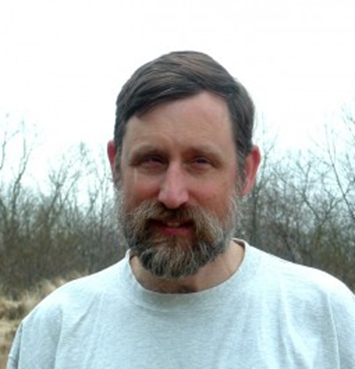
Pitcher's Thistle:Saving a Federally Threatened Species?
By Dr. Noel Pavlovic, Ecologist, U. S. Geological Survey, Lake Michigan Ecological Research Station, Great Lakes Science Center
Pitcher's thistle is a sand dune ecosystem endemic plant only found in the western Great Lakes region. The Indiana Dunes populations are at the southern limit of the species range. Threats to Pitcher's thistle include disruption of sand dune processes, succession, trampling, goldfinch seed predation, and introduced weevils. I will discuss these threats to address the question of what we should do, if anything, to help this species persist in Indiana.
Biosketch: Dr. Noel B. Pavlovic is a research ecologist with the U.S. Geological Survey, stationed at the Lake Michigan Ecological Research Station in Porter, Indiana, where he has worked for 32 years. He received his PhD in biological sciences from the University of Illinois at Chicago, MSc. in ecology from the University of Tennessee, and BS in biology from Earlham College. His dissertation focused on the biology and demography of fame flower (Phemeranthus rugospermum), a Midwestern endemic succulent plant. He has studied fire effects on the structure, phenology, and floral and faunal composition of Midwest oak savannas. His research on oriental bittersweet focuses on two areas;1) the potential for hybridization between the invasive Oriental bittersweet (Celastrus orbiculatus) and the native American bittersweet (C. scandens) and 2) fire effects on the invasion and spread of Oriental bittersweet. He has also conducted surveys on the distribution and abundance to exotic plants in three Great Lakes National Parks. Since 1988, he has been studying the ecology and fate of Pitcher's thistle with his colleague Dr. Kathryn McEachern.
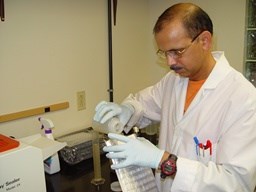
Microbiological Methods and Tools in Environmental Applications: Beach Water
Quality
By Dr. Murulee Byappanahalli, Microbiologist, U. S. Geological Survey Lake Michigan Ecological Research Station, Great Lakes Science Center
Assisted by Kasia Kelly, U.S. Geological Survey Lake Michigan Ecological Research Station, Great Lakes Science Center
The science of microbiology has played a major role in water quality monitoring programs worldwide. Bacteria in the human gut (e.g.,Escherichia coli; popularly referred to as E. coli) have been historically used as an indicator of human waste (sewage) contamination in beaches. The traditional methods for identifying these bacteria in contaminated waters typically involve multiple steps: sample collection, laboratory processing, and then growing bacteria in Petri plates that may take up to 24 hours or longer to get the results –causing a considerable delay in deciding to either open or close these beaches. In addition, the traditional methods are not always effective in identifying E. coli sources: for instance, traditional methods may not be as useful in determining whether the E. coli bacteria in beach water originated from human (sewage) or animal waste. Recent developments in microbial genetics and other advanced technologies (e.g., predictive modeling, similar to weather forecasting) have greatly advanced the science of water quality monitoring by:
(a) providing results on a real-time basis,
(b) identifying contaminant sources more effectively, and
(c) significantly reducing the time lapse between sample collection and the availability of results to just a few hours, thus a decision on beach opening or closing can be made on the same day of sampling.
The USGS Science Centers in the Great Lakes and elsewhere have played key roles in advancing the science of water quality monitoring through regional and national research programs.
Biosketches:
Researcher: Murulee Byappanahalli, Ph.D. is a Research Microbiologist with the U.S. Geological Survey, Great Lakes Science Center. He received his MS and Ph. D. degrees in Microbiology from the University of Hawaii at Manoa, with a specialty in environmental microbiology. He is the team leader for the microbiology program in his research group. His areas of research include (a) source, transport, and the fate of key microbes in Great Lakes watersheds, (b) microbial communities in algal mats and their influence on aquatic food webs and wildlife health, and (c) exploring and understanding the structure and function of microbes in lake and terrestrial ecosystems using traditional microbiology and novel molecular (genomic) techniques. He has published extensively on the ecology of indicator bacteria (E. coli,enterococci) in natural environments, such as soils and sediments, beach sand, and aquatic vegetation (nuisance algae) and his research was among the first to document the natural occurrence of indicator bacteria in nonenteric habitats. He is a member of the American Society for Microbiology and Society for Applied Microbiology.
Assistant: Kasia Kelly is a laboratory technologist with the U.S. Geological Survey. She received her BS and MS degrees in Environmental Science from Jagiellonian University in Poland with specialization in Limnology. For the past 10 years, she has been assisting in conducting research projects connected to recreational water quality at the Lake Michigan Ecological Research Station. Her daily work is very versatile and is comprised of collecting environmental samples in Lake Michigan (water, sand, algae, benthos, plankton), performing laboratory sample processing and analyses, setting up laboratory experiments, and assisting in deployment of hydrological instruments. Kasia loves Lake Michigan. Being a part of the science team, which aims to answer important research questions in the region, has been a very rewarding and exciting learning process.
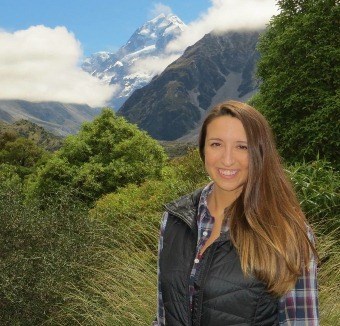
Herbaceous Plants of Indiana Dunes National Lakeshore Predicted to be Resilient to Climate Change
By Elizabeth LaRue, Purdue University, and Dr. Joy Marburger, Great Lakes Research and Education Center
It is projected that there will be higher temperatures, drought, and extreme precipitation events in northwest Indiana and Indiana Dunes National Lakeshore (INDU) over the next 100 years. This could make it harder for plants and animals to adjust to rapidly changing conditions, which will increase extinction risks. Information on whether species will be resilient or decline is largely lacking, but is necessary to guide management and restoration decisions. We conducted a literature survey of native plants from three habitats found at INDU, which are projected to be resilient to climate change. A total of ten plant species from each of the dunes, interdunal wetlands, and mesic prairie habitats were identified. The results will be used to inform managers at INDU, the state park, and other partner organizations of plants species that are likely to persist during the next 100 years in the selected habitats for restorations.
Biosketches:
Researcher: Elizabeth LaRue is a PhD student in Biological Sciences at Purdue University, working under the direction of Dr. Nancy Emery. Her research is on the dispersal evolutionary ecology of a native Great Lakes plant. She did an internship at Indiana Dunes National Lakeshore during the summer of 2013 to identify plants from three habitats at INDU projected to be resilient to climate change. Elizabeth grew up in Michigan.
Researcher: Dr. Joy Marburger has had a varied career as a biologist working for government agencies and the private sector, in addition to being an educator. She received her B.S. degree in biology from Allegheny College in Pennsylvania, a M.S.degree in biology from Bowling Green State University, and a Ph.D. in agronomy from the University of Maryland. She has conducted research in tropical botany, plant breeding and genetics, and wetland ecology. She taught biology and botany as an adjunct professor at the University of Wisconsin and at St. Johns River Community College in Florida. She conducted large-scale wetland restoration with the St. Johns River Water Management District in Florida prior to coming to the National Park Service. Her current position is research coordinator for the Great Lakes Research and Education Center, where she facilitates university and government research in Great Lakes national parks.
Presenter: Kristin Overbey is completing her Bachelors degree in Biological Sciences at Purdue University,with a focus on Ecology, Evolution, and Environmental Biology. Kristin has participated in undergraduate research for 3 years under the direction of Dr.Nancy Emery. During her time as an undergraduate, Kristin was very involved on campus and in the community through her work with the student organizations Boiler Green Initiative and Student Sustainability Council. Kristin grew up in Crown Point, Indiana, and she will be returning to Northwest Indiana as a Naturalist Intern at the Dunes Learning Center this June.
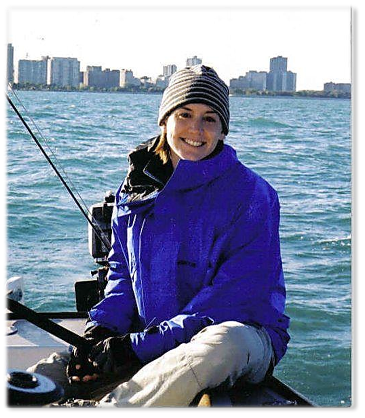
Monitoring the Shifting Sands of Mount Baldy
By Dr. Erin Argyilan, Associate Professor of Geosciences, Indiana University Northwest
Mount Baldy is an actively migrating parabolic dune at Indiana Dunes National Lakeshore that is the focus of extensive restoration efforts aimed at dune stabilization. Through this study, methods were developed to monitor short-term (seasonal to annual) changes in dune morphology and dune migration that could be reproduced by park personnel. Digital terrain models were developed to facilitate analysis of changes in the overall morphology of the dune including changes in peak height. Comparison of digital terrain models allows for mapping and quantification of areas of erosion and accumulation across the dune form. The establishment of a permanent surveying grid allows for the long-term comparison of ten topographic profiles across the dune's stoss slope. Topographic profiles are a quick method of assessing the dune's migration by measuring changes in the position of the basal slipface and the dune crest. An additional study of sediment distribution provides data on the potential transport fate of nourished sediments. Sediment data from Mount Baldy can be combined with data from the nearshore zone to inform and develop a more comprehensive beach nourishment plan for the site. Because sediment transport is driven by wind, a portable wind-profiling system was developed to evaluate the variability in winds across Mount Baldy's stoss slope. The instrument and methodology was developed and tested by this study, but reproducibility could not be achieved due to the closure of Mount Baldy in July, 2013. Ongoing work will use the methods developed for topographic surveying,mapping, sediment study, and wind analysis to better inform and evaluate ongoing restoration actions at Mount Baldy.
Biosketch: Erin Argyilan has researched coastal geology of the Great Lakes. Her primary work has focused on reconstructing lake levels over the past 4500 years. The work on Mount Baldy brings together her interest in the coasts and the dunes. Erin is currently an Associate Professor in the Department of Geosciences at Indiana University N.W.
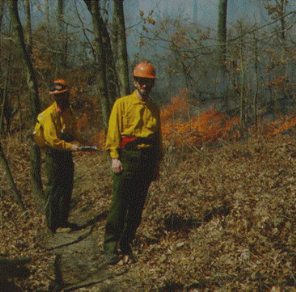
The Challenges of Maintaining Biodiversity
by Dr. Ralph Grundel, Ecologist, U.S. Geological Survey, Lake Michigan Ecological Research Station, Great Lakes Science Center
Dr. Grundel is an animal ecologist and performs studies to improve the management of oak savannah and grasslands of the Midwest. He tries to look at different groups of organisms and understand how restoration of degraded habitat to oak savannah and grassland would change species composition. Really, his studies are conducted by observation… eyes and ears. He counts animals and plants and assesses their distribution relative to factors that land managers can manipulate (like tree density, for example). His research is oriented toward providing guidelines for people to change the landscape in a way that will provide for animal and plant diversity and also help threatened species.
Biosketch: Dr. Ralph Grundel received his Ph.D. in zoology from The University of Texas at Austin where he studied the foraging ecology of the Mountain Chickadee, a feisty bird that loves high places. Dr. Grundel earned his B.A. in Biology from Wesleyan University and completed postdoctoral training in cell biology at the University of California, Berkeley. Ralph does research on how climate change affects animal and plant populations and on how we might improve conservation and restoration of savannas, a highly threatened habitat present in the Midwest U.S.
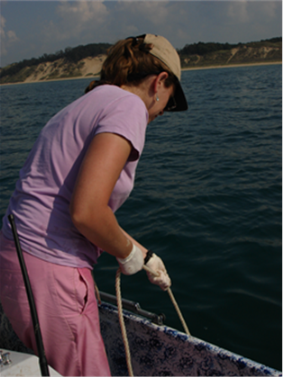
How Clean is the Lake? Improving Water Quality for Swimming, Drinking, and
Fishing
by Meredith B. Nevers, Aquatic Ecologist, U.S. Geological Survey, Lake Michigan Ecological Research Station, Great Lakes Science Center
The Great Lakes are subject to a variety of pollutants, including wastewater, agricultural runoff, and air contaminants. Anyone enjoying the lake wants to know that the water is safe for drinking, swimming, and fishing. In order to monitor for sewage contamination, water is tested for E. coli bacteria, an organism present in the human gut. While the E. coli may not be harmful, they can be indicating the presence of illness-causing microbes: bacteria, viruses, and protozoan parasites. Further, an abundance of sewage contributes a large amount of nutrients to the nearshore, which can cause prolific growth of nuisance species, harm native organisms, and cause shifts in the nearshore community. Using microbiological and mathematical sciences, USGS scientists are developing tools for beach managers that allow faster and more accurate predictions of E.coli concentrations and nearshore conditions. These tools are helping to increase access to safe clean water so that all can enjoy the Great Lakes.
Biosketch: Meredith B. Nevers received her B.A. in biology/English from Wittenberg University and her M.S. in marine biology from the University of North Carolina at Wilmington. She has worked with the USGS for the past 17 years. Her research interests include microbiological contamination of beaches, impact assessments on biological communities, and aquatic ecology. Nevers has published extensively on beach health and improving monitoring accuracy through predictive modeling as well as in the ecology and natural occurrence of indicator bacteria. Nevers is the President of the Great Lakes Beach Association and is an active member of the American Society for Microbiology, and the International Water Association.
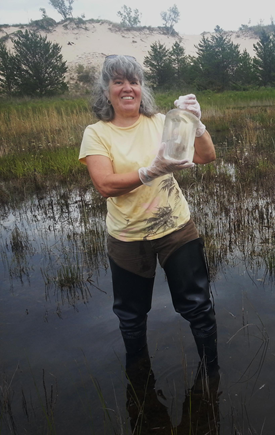
Dragonflies: Sentinels of Environmental Health
by Dr. Joy Marburger, Research Coordinator, National Park Service Great Lakes Research and Education Center
Aquatic insects form the base of the food web of other organisms such as amphibians and fish. Dragonflies are one group of insects that spend their larval stages in aquatic environments and consume other aquatic organisms such as beetles and tadpoles. They are sentinels of environmental health because they are predators and can bioaccumulate contaminants by consuming other organisms in that same environment. Mercury is one such contaminant found in the environment in Northwest Indiana. It is a byproduct of burning coal which allows the mercury to enter the atmosphere. The mercury compounds are deposited into the aquatic environment where bacteria convert it to a highly toxic form, methylmercury.This is the form which bioaccumulates in aquatic organisms. It can cause neurological and developmental damage to these organisms, as well as to humans.
Biosketch: Dr. Joy Marburger has had a varied career as a biologist working for government agencies and the private sector, in addition to being an educator. She receivedher B.S. degree in biology from Allegheny College in Pennsylvania, a M.S.degree in biology from Bowling Green State University, and a Ph.D. in agronomy from the University of Maryland. She has conducted research in tropical botany, plant breeding and genetics, and wetland ecology. She taught biology and botany as an adjunct professor at the University of Wisconsin and at St. Johns River Community College in Florida. Dr. Marburger conducted large-scale wetland restoration with the St. Johns River Water Management District in Florida prior to coming to the National Park Service. Her current position is research coordinator for the Great Lakes Research and Education Center, where she facilitates university and government research in Great Lakes national parks.
Last updated: May 7, 2015
